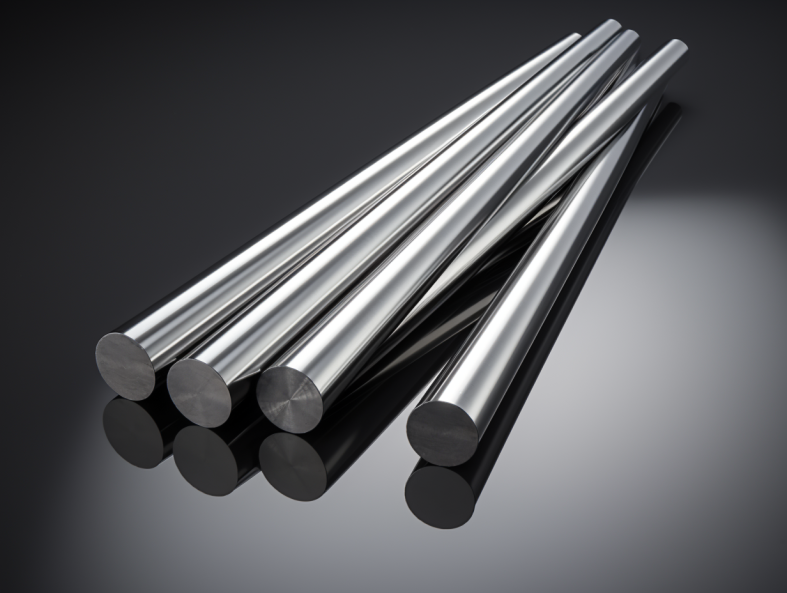油井の深部から手術室の無菌環境まで、 カーバイド ロッド は、世界中の産業に静かな革命をもたらしている。人類が知る限り最も硬い素材のひとつから作られたこの控えめな円柱状の棒は、幅広い用途で不可欠なものとなるユニークな特性を兼ね備えています。
このディープダイブでは、超硬棒の多様な用途の世界を探求し、その卓越した硬度、耐摩耗性、過酷な条件に耐える能力がいかに産業を変革し、イノベーションを促進しているかを紹介します。
表面を超えて:超硬合金の力を理解する
用途を掘り下げる前に、超硬ロッドの何が特別なのかを把握することが重要だ。高温で軟化する鋼とは異なります、 炭化タングステンこれらのロッドの主成分であるCr.Co.は、極端な高温下でもその強度と硬度を維持します。これは、卓越した耐摩耗性と耐腐食性と相まって、他の材料では困難な過酷な用途に理想的な材料です。

1.金属加工:精度と性能の融合
超硬ロッドは金属加工業界の縁の下の力持ちであり、金属部品を比類のない精度で成形・成型するさまざまな切削工具の土台を形成しています:
- エンドミル 機械加工界の主力工具であるエンドミルの刃先には、超硬ロッドが使用されています。超硬の極めて高い硬度により、エンドミルは鋼やチタンのような強靭な金属を容易に切削することができ、耐摩耗性により長い工具寿命と安定した性能を保証します。
- ドリル 回路基板の小さな穴あけから重機の大きな開口部の穴あけまで、超硬ドリルビットは、最も堅い材料でも貫通する能力が不可欠です。その耐熱性は、性能と寿命をさらに向上させます。
- リーマー: 精密な穴の仕上げが重要な場合、超硬リーマが中心的な役割を果たします。超硬棒から作られたこれらの工具は、あらかじめ開けられた穴を正確な寸法に拡大・精密化し、ベアリング、ブッシング、その他の重要な部品の滑らかで正確な表面を確保します。
2.石油とガス極限環境を克服する
石油・ガス探査や採掘の過酷な条件下では、莫大な圧力、研磨材、腐食性環境に耐える材料が要求されます。超硬ロッドはこの難題に対応します:
- ノズル: 掘削作業では、岩層を破壊するために研磨材を含む高圧ジェット流体が使用されます。優れた耐摩耗性を持つ超硬製ノズルは、これらのジェットの形状と効果を確実に維持し、掘削効率を最大化し、装置の寿命を延ばします。
- ドリルビット 岩石層を貫通するドリル加工には、驚異的な強度と耐久性が要求されます。超硬チップをドリルビットに組み込むことで、最も厳しい地層でも貫通するのに必要な硬度と耐摩耗性を実現し、ダウンタイムを低減して全体的な掘削コストを削減します。
3.航空宇宙強さと軽さで空を目指す
航空宇宙産業では、燃料効率と性能を最大化するために、驚異的な強度と軽さを併せ持つ材料が求められています。ユニークな特性を併せ持つ超硬ロッドは、重要な役割を果たしています:
- エンジン・コンポーネント 航空機エンジン内の極端な温度と高い応力は、これらの厳しい条件に耐える材料を必要とします。タービンブレードやシールなどの超硬部品は、信頼性の高いエンジン性能を確保するために必要な強度、耐熱性、耐摩耗性を備えています。
- 構造部品: 高い強度対重量比が重要な特定の用途では、超硬部品が航空機の構造部品に使用され、構造の完全性を損なうことなく全体の軽量化に貢献している。
4.メディカル救命のための精密工学
医療機器や器具に関しては、精度、生体適合性、信頼性が最も重要です。超硬ロッドはその要求に応えます:
- 手術器具: 超硬合金の硬度と鋭い刃先を維持する能力は、手術器具に理想的です。超硬合金製のメス、ドリル、その他の切削器具は、外科医が繊細な手技を精密かつ正確に行うことを可能にします。
- インプラント: 歯科用インプラントや人工関節のような特定の用途では、超硬合金の生体適合性と耐摩耗性は、人体内での日常的な使用によるストレスに耐えることができる、耐久性があり長持ちするインプラントの作成に適している。
5.自動車耐久性と性能でイノベーションを推進
自動車産業は、自動車の性能、効率、寿命を向上させる材料を常に求めています。超硬ロッドは様々な方法でこれらの目標に貢献しています:
- ベアリング: ホイールベアリングのような高負荷領域では、超硬合金の硬度と耐摩耗性が、ベアリングの長寿命化、燃費の向上、メンテナンス要件の低減につながります。
- バルブコンポーネント: エンジンバルブでは、高温に耐え、摩耗に強い超硬部品が使用され、最適なエンジン性能と排出ガスの低減に貢献している。
6.木工滑らかで正確なカットを実現する
超硬ロッドは金属加工のイメージが強いが、木工業界でも、特に要求の厳しい用途で重要な役割を果たしている:
- ノコギリのコツ 超硬チップソーブレードは、その切れ味、耐久性、広葉樹や複合材を含む様々な種類の木材に滑らかで正確な切断を行う能力で知られています。これらのブレードは、従来のスチール製ブレードよりも切れ味が長く維持されるため、シャープニングのためのダウンタイムが短縮され、全体的な切断効率が向上します。
7.金型製作:複雑なディテールで未来を形作る
プラスチック部品から金属部品まで、さまざまな製品を製造するための金型を作るには、複雑なディテールを保持し、繰り返しの使用に耐える素材が必要です。超硬ロッドは、このような要求に応えることができます:
- 金型インサート: 超硬インサートは、他の材料では困難または不可能な複雑な形状や特徴を形成するために金型に組み込まれます。その硬度と耐摩耗性により、金型は長時間の生産でも寸法精度を維持し、高品質で安定した部品を得ることができます。
表1:超硬棒の多様な用途を垣間見る
| 産業 | 申し込み | 超硬合金の主要特性 |
|---|---|---|
| 金属加工 | 切削工具(エンドミル、ドリル、リーマ) | 硬度、耐摩耗性、高温安定性 |
| 石油・ガス | ノズル、ドリルビット | 耐摩耗性、耐食性 |
| 航空宇宙 | エンジン部品、構造部品 | 高温強度、軽量 |
| メディカル | 手術器具、インプラント | 生体適合性、耐摩耗性 |
| 自動車 | ベアリング、バルブ部品 | 耐摩耗性、高温安定性 |
| 木工 | ノコギリのチップ | 硬度、耐摩耗性、切れ味 |
| 金型製作 | 金型インサート | 硬度、耐摩耗性、寸法安定性 |
よくある質問超硬棒の用途に関する質問にお答えします
1.特定の用途のために超硬棒を選ぶとき、どのような要素を考慮すべきですか?
主な要因には、加工する材料、要求される公差、使用温度、予想される磨耗や損傷、予算の制約などがあります。特定のニーズに最適なグレードと特性を決定するには、超硬サプライヤーまたは専門家に相談することをお勧めします。
2.特定の用途で超硬ロッドを使用することに制限はありますか?
超硬合金は優れた特性を持つ一方で、その限界を考慮することが不可欠です。超硬合金はもろく、衝撃や高振動条件下では欠けやすくなります。さらに、超硬合金は非常に硬いため、加工には特殊な設備と専門知識が必要です。
3.超硬棒にコーティングして性能を高めることはできますか?
超硬ロッドは、窒化チタン(TiN)や窒化チタン・アルミニウム(TiAlN)などの様々な材料でコーティングすることで、耐摩耗性、潤滑性、耐酸化性をさらに高めることができます。コーティングは多くの場合用途に特化しており、過酷な環境下での工具寿命を大幅に延ばすことができます。
4.超硬ロッドの適切な廃棄方法を教えてください。
超硬合金はタングステンとコバルトを含むため有害廃棄物とみなされ、人体や環境に有害な可能性があります。カーバイド棒の処分は、有害物質の取り扱いを専門とする認定廃棄物処理業者を通じて行うことが極めて重要である。
5.超硬棒の用途における今後の動向は?
超硬棒の需要は、産業界がますます厳しい条件に耐える材 料を求め続けていることから、拡大が見込まれている。超硬合金グレード、コーティング、製造技術の進歩により、この万能材料の用途はさらに拡大し、さまざまな分野での技術革新が促進されるであろう。
良い価格で安い炭化タングステンの棒を購入したいですか? これ.




